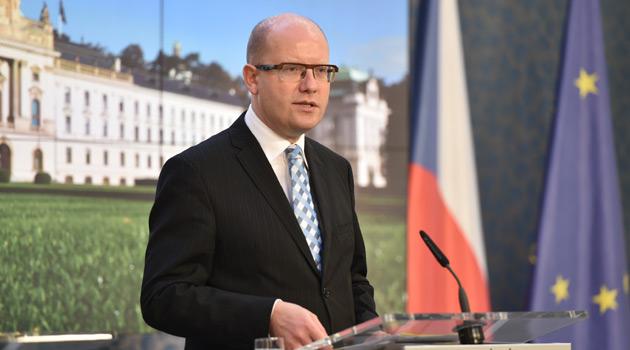Czech Govt report: Half of Romani population are middle class, half in social exclusion

Half of the Roma in the Czech Republic live in social exclusion. According to the qualified estimates of the coordinators for Romani minority affairs that is almost 123 000 people.
Roughly 70 % of the Romani population of the Moravian-Silesian Region has ended up on the outskirts of society, while about 60 % of the Romani populations of the Olomouc and Ústecký Regions are in that situation. Those are the findings of the Czech Government Report on the State of the Romani Minority for 2016 which the Government should soon be reveiwing.
The Czech News Agency has seen a copy of the document. Compared to 2015, the situation did not improve last year.
Romani people are the biggest national minority in the Czech Republic. According to the coordinators’ estimates, there are 245 800 Roma in the country.
That number is equivalent to 2.3 % of the population of the Czech Republic. There are about 11 million Romani people living throughout Europe.
In neighboring Slovakia Romani people represent 9 % of the population. “Roughly half of the Romani people in the Czech Republic are integrated into society. The other half are Romani people who are socially excluded or at risk of social exclusion, They are marginalized and pushed to the outskirts of society,” the report states.
According to the document, half of the Romani minority are members of the intelligentsia and the middle class. Many of those Romani people, however, still grapple with discirmination on the basis of their origin, even when they are educated, successful in their work, have sufficient incomes and are financially solvent, the authors of the document point out.
Public opinion polls demonstrate that the attitude taken toward Romani people in the Czech Republic is unchanging. For years they have been the least-liked minority.
“While this is a long-term task, the Government has still not managed to improve the way most people in the Czech Republic view the Romani minority,” the report says. Most Romani people in the Czech Republic live in the Moravian-Silesian and Ústecký Regions.
Experts estimate that about 32 600 Romani people live in Moravia-Silesia, while around 68 500 Romani people live in the Ústecký Region. In the capital, according to coordinators, there are about 17 000 Romani people, one-fifth of whom live on the outskirts of society.
Roughly 30 % of the socially excluded Romani people in the Czech Republic live in the Pardubice and Zlín Regions. Romani people frequently end up on the outskirts of cities or regions living in residential hotels.
According to the report, Romani people have “very restricted access” to the ordinary housing market. Their incomes are usually low, they frequently live on social welfare, and they tend to be in debt.
“In previous years, moreover, orchestrated relocations of Romani people into certain localities have happened quite often. The problem of socially excluded localities then arose,” the report states.
According to the most recent expert analyses, the number of apartment complexes, quarters and whole streets that are home to impoverished people has doubled between 2006 and 2014. The number has risen from 300 to 600 such localities.
The number of people living in such localities has also risen – instead of 80 000 in 2006, there were about 115 000 in 2014. The majority of these people are Romani.
Statistics about Romani people are not kept by the authorities. Ascertaining their situation is made difficult by the fact that they frequently move in order to access more affordable housing.
According to the report, some Romani families change their addresses as frequently as four times a year. Most of them, however, tend to relocate within the same region.
The state budget expended CZK 69.16 million (EUR 2.6 million) on Romani integration. The finances were divided between the Czech Culture Ministry, the Czech Education Ministry, and the Office of the Czech Government.
That money made its way, for example, to support Romani coordinators in the regions or scholarships for Romani students. Since 2013 the amount of financing available for these aims has been gradually growing, but it has yet to reach previous levels.
In 2010, for example, CZK 86.71 million [EUR 3.3 million] was expended on Romani integration. The Government report also assesses the state of Romani educational achievement, employment, health and safety.
According to the document, Romani children are still ending up segregated in what used to be called the “special schools” much more frequently than non-Romani children do. Romani residents of ghettoes also are in worse health than non-Roma.
